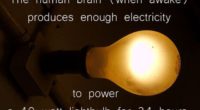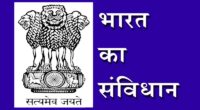Biology NEET MCQ – 2
Three important proteins present in blood are
(a) Collagen, albumin, fibrinogen
(b) Albumin, globulin, Actin
(c) Globulin, albumin, collagen
(d) Albumin, globulin, fibrinogen
Pulse pressure is
(a) Diastolic pressure
(b) Difference between b and a
(c) Systolic pressure
(d) Pressure in great veins
Diabetes insipidus is due to
(a) Hyposecretion of vasopressin
(b) Hyposecretion insulin
(c) Hyposecretion of insulin
(d) Hyposecretion vasopressin
There are four types of Diabetes insipidus (DI), each with a different set of causes. Central DI (CDI) is due to not enough of the hormone vasopressin (antidiuretic hormone). This can be due to damage to the hypothalamus or pituitary gland or genetics. Nephrogenic diabetes insipidus (NDI) occurs when the kidneys do not respond properly to vasopressin. Dipsogenic DI is due to abnormal thirst mechanisms in the hypothalamus while gestational DI occurs only during pregnancy.
ADH influences water permbeality in the
(a) Regulation of blood pressure
(b) Removal of urea
(c) Regulation of acidity of fluids
(d) secretion of antibiotics
Green glands found in ___________ are excretory in function (a) Spiders
(b) Moth
(c) Scorpions
(d) Prawn
Hepatic portal system initiates from
(a) Digestive system to liver
(b) Kidney to liver
(c) Liver to heart
(d) Liver to Kidney
Serotonin in the blood
(a) Relaxes blood vessels
(b) Helps in clotting of blood
(c) Prevents clotting of the blood
(d) Constricts blood vessels
Purkinje’s fibres are special types of
(a) Muscle fibres located in heart
(b) Nerve fibres located in cerebrum
(c) Connective tissue fibers joining one bone to another bone
(d) Sensory fibers extending from retina into optic nerve
Valves that allow blood flow from ventricles into arteries and not in opposite direction are
(a) Aortic valve and mitral valve
(b) AV valves and semilunar valves
(c) Bicuspid and tricuspid valves
(d) Semilunar valves and tricuspid valve
_____________ is activated as the blood volume and volume of body fluid changes
(a) Medulla oblongata
(b) Osmoreceptors
(c) Aorta
(d) Renal vein
Answers of these questions


